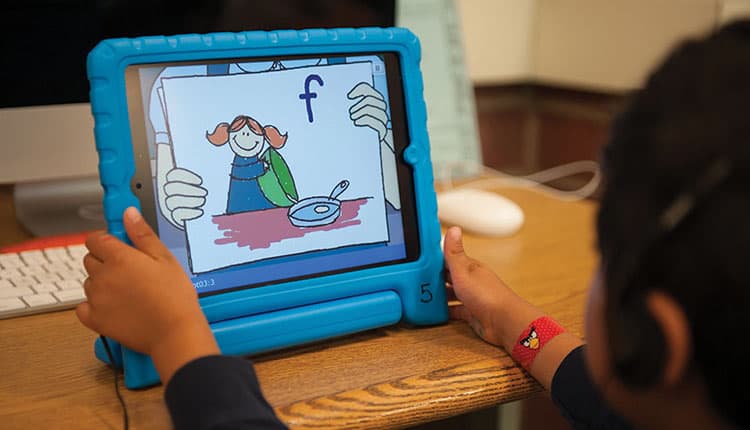 Have you ever looked for an age-appropriate app to use in your classroom? Or had a parent ask you for learning app recommendations? Wading through the seemingly endless mass of apps can be a daunting process. We asked Kimberly, one of our instructional designers, to give us some tips to help based on our years of research developing Waterford’s computer-based curriculum!
Have you ever looked for an age-appropriate app to use in your classroom? Or had a parent ask you for learning app recommendations? Wading through the seemingly endless mass of apps can be a daunting process. We asked Kimberly, one of our instructional designers, to give us some tips to help based on our years of research developing Waterford’s computer-based curriculum!
Tips for Choosing a Learning App
Simplicity. When it comes to choosing apps for early learners, the biggest thing is that you don’t want too much going on. Working memory can only deal with 5-7 things at a time, so if there are a lot of sounds and blinking lights and a screen with lots of things to look at, kids won’t have any bandwidth left for actual learning. Simple is best.
Stimulates Multiple Senses in a Productive Way. That’s not to say there shouldn’t be any bells and whistles. We all learn fastest when more than one sense is helping to encode the new information. Our brain processes most information using what cognitive scientists call the “visuospatial sketchpad” (what something looks like and how it’s positioned relative to the objects around it) and the auditory track (this includes, surprisingly enough, reading, since our brain extracts meaning from words by processing their sounds.) So as long as they don’t interfere with each other, it helps to have something shown visually and heard at the same time. Sound effects help if they are pointing your attention to something, or if someone is narrating what you should do as you concentrate on a diagram. What you want to avoid is unnecessary multimedia interference.
Promotes Concentration. You also want apps that help kids concentrate on exactly what they need to learn and no more. Learning to hold a pencil the right way and apply the right amount of pressure, for example, soaks up a lot of time and attention in its own right. So if you’re teaching kids about letter shapes, it’s nice to be able to just trace them with your finger, as you do in Waterford Early Learning and handwriting apps like LetterSchool and iTrace.
Come back next week for Part II where we discuss other important qualities of age-appropriate apps for early learners!

